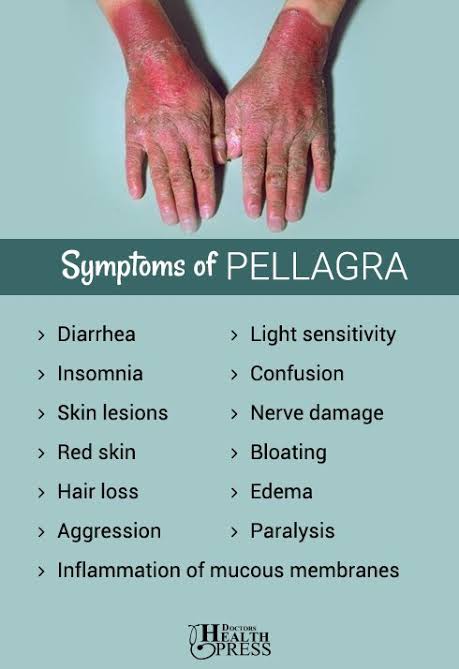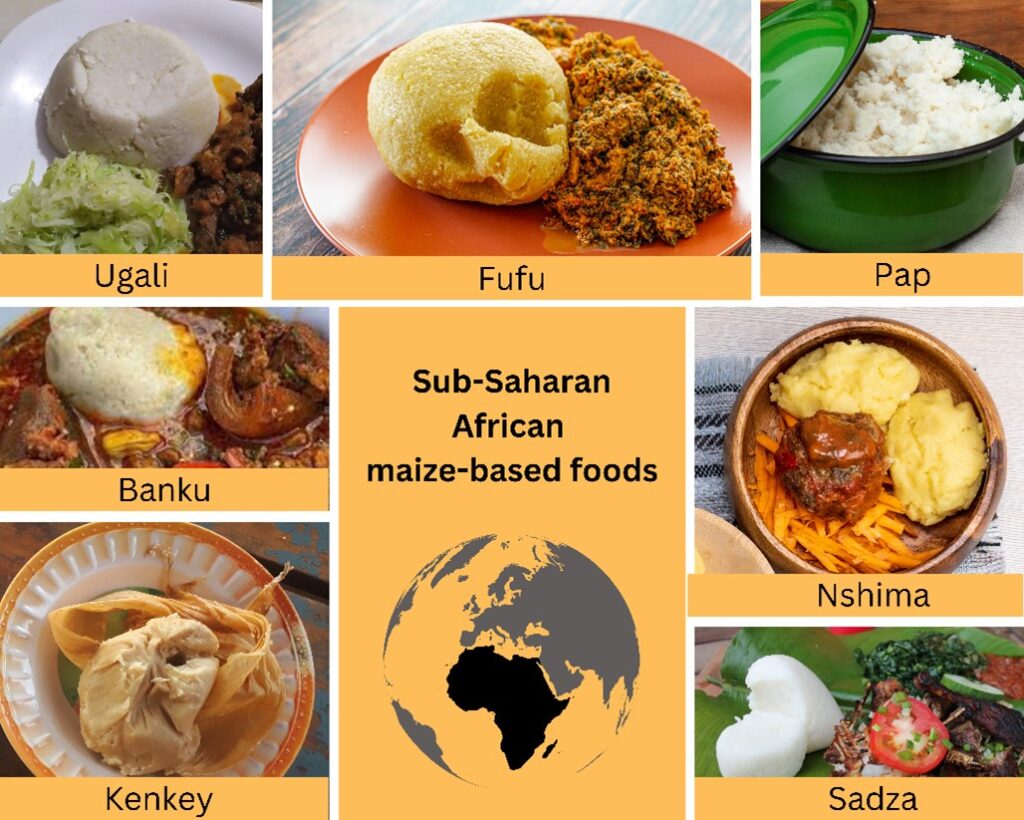Pellagra is a condition of micronutrient malnutrition caused by a severe deficiency of vitamin B3 (niacin) and its precursor known us tryptophan. The World Health Organisation (WHO) reports that, pellagra outbreaks are common in refugee’s camps and among internally displaced population in regions such as Zimbabwe, Angola, and Ethiopia etc. This makes it necessary to take steps that will prevent pellagra not just in these regions but other places where limited micronutrients in food is evident.
Niacin is an essential vitamin in the human body better known as vitamin B3. It is involved in the production of cholesterol and fats, the creation and repair of DNA, and acts as an antioxidant to protect cells from damage. To prevent pellagra is to make available vitamin B3 in enough quantity needed to mediate all these functions.
Historically speaking, pellagra has been associated with diets heavily reliant on non –alkali –treated maize. Pellagra can have life threatening implications if left unchecked that is characterized by the “4 Ds”: diarrhea, dementia, dermatitis and death.

Pellagra primarily affects populations with limited access to niacin-rich foods, such as meat, eggs, fish, and legumes. It is particularly prevalent in developing countries where maize is a staple food, as corn contains niacytin, a form of niacin that is difficult for the body to absorb.
How To Prevent Pellagra In Poverty Endemic Regions
It is highly feasible to prevent pellagra in developed regions by relying on rich food substituents and balanced –diets that directly contain niacin. With niacin or nicotine amide food supplements, this will definitely result in improvements within a few months of the illness with gastrointestinal symptoms being the first to heal. Skin and mouth sores typically start healing within two weeks, although severe nerve damage and dementia may be irreversible.
Some food substances that are key to prevent pellagra and the amount of niacin they contain are listed below:
Chicken: 100 grams can provide 10-12 mg of niacin which is about 50-60% of the recommended daily take for adults.
Turkey: Turkey’s breast meat is rich in niacin. Cooked turkey breast (about 100 grams) contains approximately 10 mg of niacin.
Beef: Beef, a 100 gram serving of cooked lean ground beef provides about 5-6 mg of niacin
Pork: including lean cuts like tenderloin, provides about 6-7 mg of niacin per 100 grams of cooked meat
Fish: cooked Tuna of 100 grams provides up to 20 mg of niacin, while salmon provides about 8-9 mg.
Egg : egg on a larger scale provides about 0.3 – 0.5 mg of niacin. It provides in lesser quantity as compared to meat.
Legumes: Beans, peanuts, kidney beans, black beans etc. also contain about 1-2 mg of niacin.
Treatment of Maize To Prevent Pellagra
Maize which is one of the most common food world wide does contain niacin but in it inactive form called niacytine. It is a staple food consumed in various forms in multiple countries such as ugali (made in Kenya) , Banku made in Ghana, Ogi/Pap made from fermented maize, Makke di Roti made in Northern Africa particularly in countries like Tunisia, Algeria and Morocco.

Soaking maize in an alkaline rich medium, a process known as nixtamalisation, actually increases the bioavailability of niacin. By so doing, maize consumption can be a medium to prevent pellagra as the processing renders the protein tryptophan more digestible.
Humans can covert tryptophan to niacin which also helps to prevent pellagra. The alkaline condition of the medium breaks down the hemicellulose that binds niacin in the corn making it more bioavailable. It was originally taught that the anti-pellagra action stems from increased availability of niacin (compared to hemicellulose bound form called niacytin) but multiple experiments have disproven this theory. (Thigpen, August 2010). Further research work needs to be done in this area to actually elucidate the amount of tryptophan that the body can convert to niacin and whether it is enough for the body demands.
REFERNCES
European food safety Authority. 2014. Scientific Opinion on Dietary Reference Values for Niacin. EFSA journal 2014; 12 (7) : 3759
Public Health England. 2019. McCance and Widdowsons Composition of Foods Integrated Dataset.
Pellagra: Pictures, Symptoms, Causes, and Treatment – Health line https://www.healthline.com/health/pellagra
The Treatment of Pellagra – NCBI https://www.ncbi.nlm.nih.gov/pmc/articles/PMC9649201/pdf/texmedj143224-0025.pdf
Pellagra: Definition, Symptoms & Treatment – Cleveland Clinic https://my.clevelandclinic.org/health/diseases/23905-pellagra
Pellagra – Wikipedia https://en.wikipedia.org/wiki/Pellagra
Pellagra: Definition, symptoms, pictures, and more https://www.medicalnewstoday.com/articles/pellagra
World Health Organisation (WHO). 2004. Vitamin and Mineral Requirement in Human Nutrition. 2nd Edition. Geneva, Switzerland: WHO
